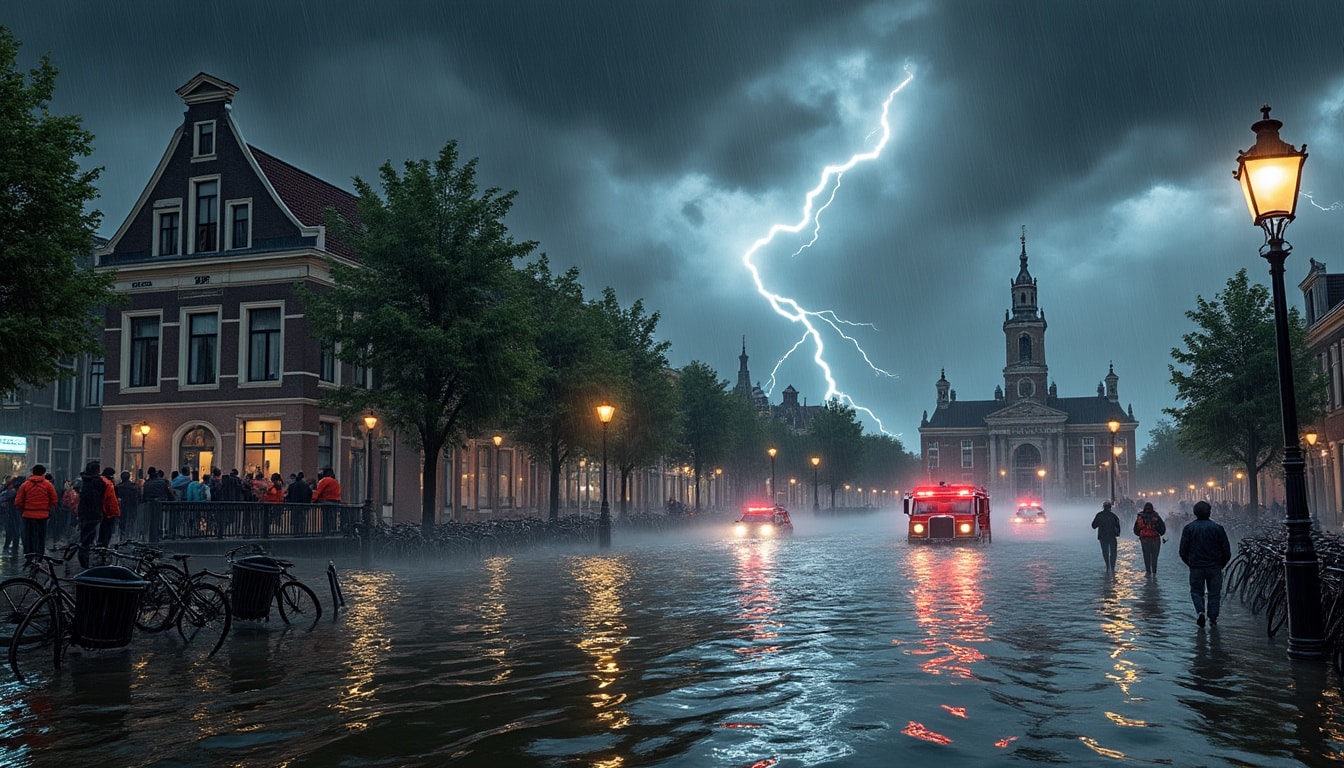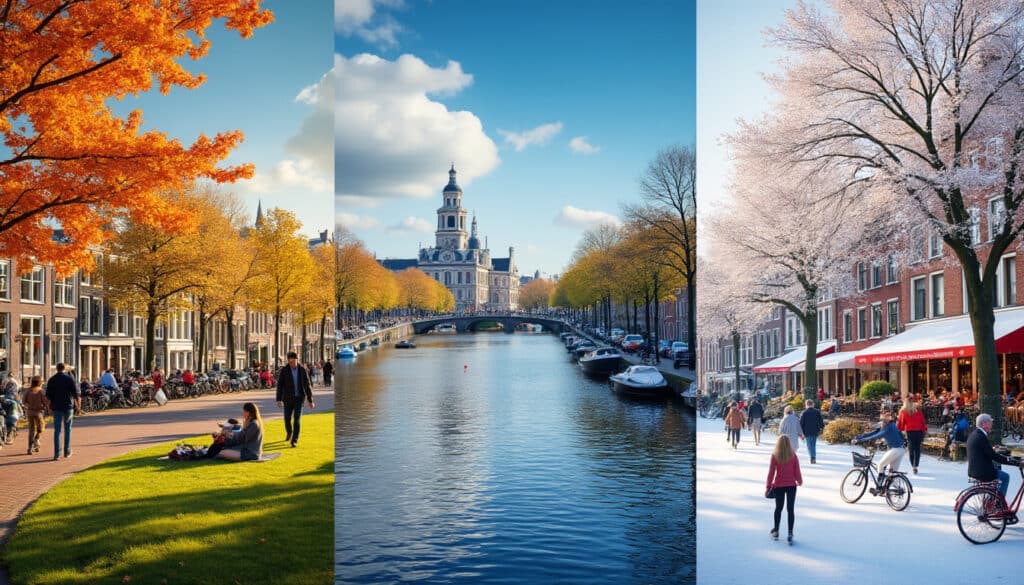Amsterdam, a city renowned for its charming canals and picturesque streets, is not just an iconic European destination. It is also a symbol of human resilience and adaptation in the face of natural challenges. Over the centuries, this vibrant city has battled with the persistent threat of flooding, which is not only a lingering fear but also a catalyst for innovation. The remarkably low elevation, often sitting below sea level, and the intricate network of rivers and canals render it vulnerable to water ingress. However, the convergence of traditional engineering and modern technology has fostered robust strategies to mitigate these risks, ensuring that Amsterdam continues to thrive against the odds.
Is Amsterdam in danger of flooding?
The possibility of flooding in Amsterdam, as within much of the Netherlands, is not merely speculative—it’s a historically recurrent threat. The city is approximately 2 meters below sea level, a geographical trait that has required constant vigilance and proactive measures. The Dutch government agency, Rijkswaterstaat, places Amsterdam’s annual probability of flooding at 1/80. This means each year brings a risk, albeit small, of encountering significant flood events.
To provide context, other regions like Groningen have a higher flood probability, recorded at 1/180. This statistical data highlights not only the risks faced by Amsterdam but also emphasizes the necessity of maintaining a vigilant and evolving approach to flood management. But why does the city face such pressing flooding risks?
In part, it’s due to the city’s unique geographical positioning. The Netherlands is aptly described as a natural basin because it lies at the confluence of major European rivers like the Rhine, Meuse, and Scheldt. This geographical formation naturally funnels excess water towards lower-lying areas, including Amsterdam. As a result, any excessive rainfall or river overflow within the region has direct repercussions for the city.
- 🚧 Flood Probability: 1/80 annually in Amsterdam.
- 🌊 River Basins: Rhine, Meuse, and Scheldt pose potential risks.
- 🏙️ Geographical Traits: Approximately 2 meters below sea level.
Innovative flood management programs have been employed, such as Room for the River, which embraces natural water movement rather than outright control. These strategies are instrumental in safeguarding urban areas, demonstrating a blend of engineering foresight and respect for natural dynamics. Consequently, the balance between urban development and natural water flow has become a testament to Dutch ingenuity, ensuring the city remains safe for its inhabitants and visitors alike.
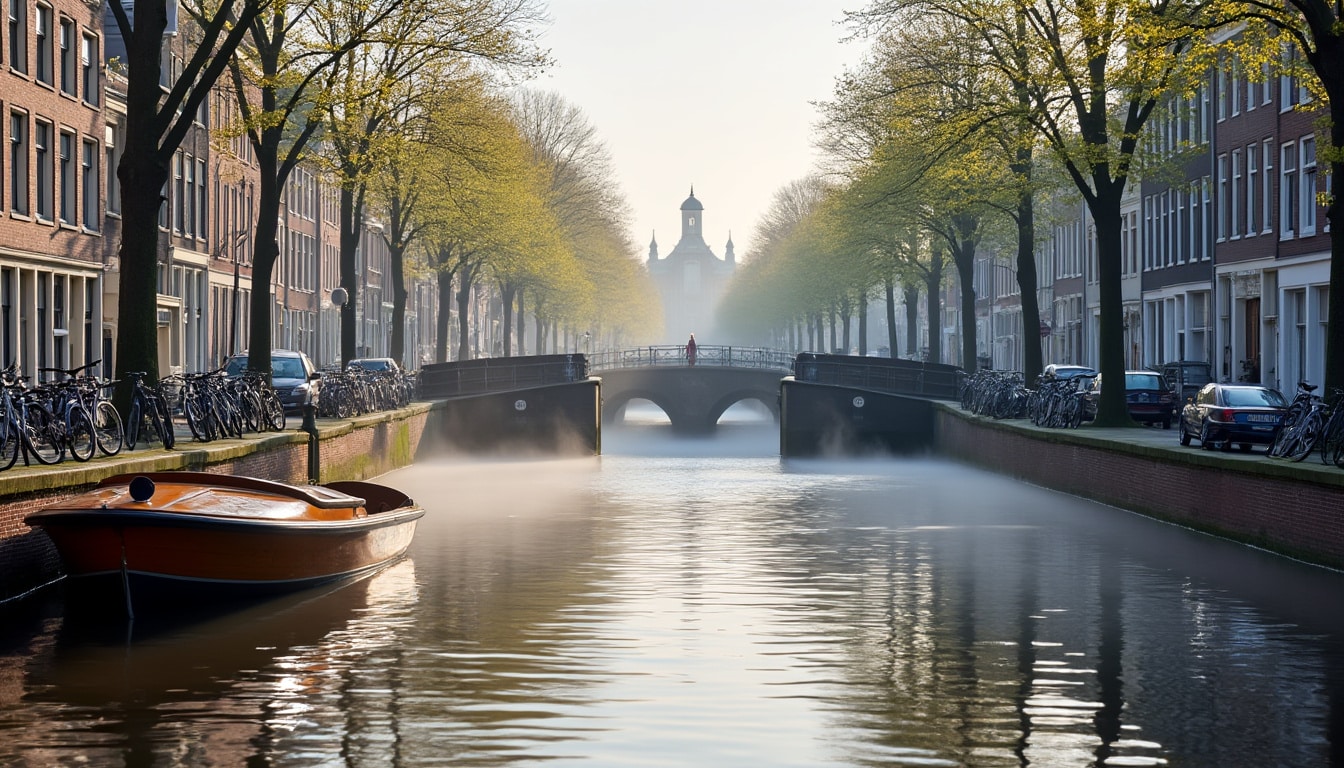
FloodGuard and Protective Measures
FloodGuard systems, including effective use of AquaBarrier and StormShield technology, are key elements in Amsterdam’s current flood defense strategy. These technologies aim not only to fortify the existing infrastructure but also to innovate how urban centers interact with the surrounding natural forces. FloodGuard and other measures such as WaveBlocker offer state-of-the-art protection by both reinforcing traditional dike systems and integrating modern technological capabilities.
The Role of Technology in Flood Prevention
The intersection of technology and tradition has been pivotal in Amsterdam’s fight against flooding. With advancements like RainResist and HydroProtect, the city’s water management strategies have significantly evolved, ensuring effective protection against natural elements. Modern solutions are not just about preventing disasters; they also involve forecasting and early warning systems like FloodSense to better prepare and respond to potential threats.
Technological interventions have not only modernized but indeed revolutionized how cities like Amsterdam can mitigate natural risks:
- 🔍 Predictive Analytics: Utilizing data to anticipate flood scenarios.
- 🔔 Early Warning Systems: Real-time alerts enhance readiness.
- 💧 Water Management Tech: New tools in hydro-engineering.
Moreover, technologies such as EcoDike, which incorporate environmentally sustainable methods into flood protection, ensure that ecological considerations are not sidelined in the pursuit of safety. These advancements reflect a forward-thinking approach to disaster risk reduction, marrying technology with environmental stewardship. As the climate evolves and new challenges arise, these technological systems serve as the backbone of Amsterdam’s proactive defense against flooding.
Impact of Climate Change on Amsterdam’s Natural Risks
As global climate patterns shift, Amsterdam is tasked with adapting to new environmental phenomena. Climate change exacerbates existing vulnerabilities by intensifying weather events, such as extreme rainfalls, often resulting in higher risks of water overflow. The potential for increased flooding presents new challenges, highlighting the importance of adaptive strategies and robust natural risk solutions.
Climate change impacts in Amsterdam include:
- 🌧️ Increased Rainfall: Leads to potential overflows.
- 🌡️ Rising Sea Levels: Threatens coastal and inland safety.
- ⚠️ Altered Weather Patterns: Unpredictability heightens risks.
City planners integrate climate projections into infrastructure development. This strategic foresight is fundamental in maintaining both urban and ecological resilience. Historical data and predictive models inform infrastructural improvements, ensuring systems like StormShield remain adequate in facing future challenges.
Emphasizing the importance of adaptive infrastructure, Amsterdam continues to lead by example in the global arena, showcasing how urban areas can protect themselves from the myriad risks posed by a changing climate.
Community Involvement and Education
Community engagement and public education play critical roles in Amsterdam’s strategy against flooding. Empowering citizens with knowledge about natural risks ensures they are well-prepared and responsive in emergencies. Community programs aim to foster a culture of resilience, where residents understand and contribute to the collective safety infrastructure.
Education initiatives include:
- 📚 Public Workshops: Teaching flood response and preparedness skills.
- 🛠️ Youth Engagement Programs: Encouraging active participation in environmental care.
- 🗺️ Awareness Campaigns: Promoting understanding of local flood risks.
Such initiatives underscore the importance of shared responsibility in building a resilient community. By combining infrastructure improvements with an informed public, Amsterdam effectively harnesses community spirit as a vital element of its flood management strategy. This partnership ensures that the collective efforts of technology, industry, and the public align towards a safer, more secure living environment.
Constructing a Future with Robust Flood Solutions
The future of Amsterdam relies on continuous innovation and forward-thinking flood solutions. The amalgamation of traditional dike systems with advanced technologies like WaterSafe, significant infrastructural renovations, and community participation will propel the city toward sustainable safety. Amsterdam’s blueprint for flood prevention serves as a model for cities worldwide grappling with similar natural risks.
In crafting this secured future, several strategies are being vigorously pursued:
- 🔧 Infrastructure Enhancements: Ongoing upgrades to existing systems.
- 💼 Policy Development: Adaptive policies for risk management.
- 🌍 Global Collaboration: Sharing insights with international counterparts.
The confluence of local ingenuity, government support, and global partnerships promises a resilient Amsterdam, ready to face the future with confidence. By advancing natural risk solutions, the city not only safeguards its historic heritage but also ensures prosperity for generations to come.
FAQ
| Question | Answer |
|---|---|
| What is the biggest threat to Amsterdam from flooding? | Extreme rainfall and rising sea levels are major threats, emphasizing the need for dynamic management systems. |
| How does technology contribute to flood prevention in Amsterdam? | Advanced technologies provide predictive analytics and early warning systems, increasing preparedness for potential floods. |
| What initiatives support community involvement in flood prevention? | Public education programs and workshops equip residents with knowledge and skills to enhance collective flood resilience. |
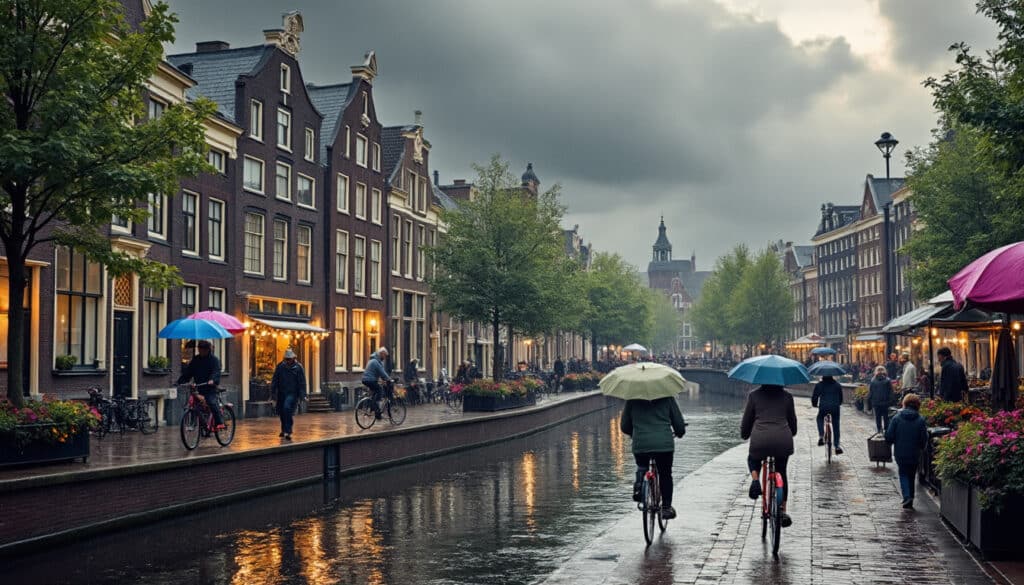
Climate & Weather in Amsterdam
When planning a trip to the picturesque city of Amsterdam, understanding its diverse climate and weather patterns is essential. Famed for its canals, historical architecture, and vibrant cultural scene, Amsterdam is a popular destination for tourists and travelers. However, its…
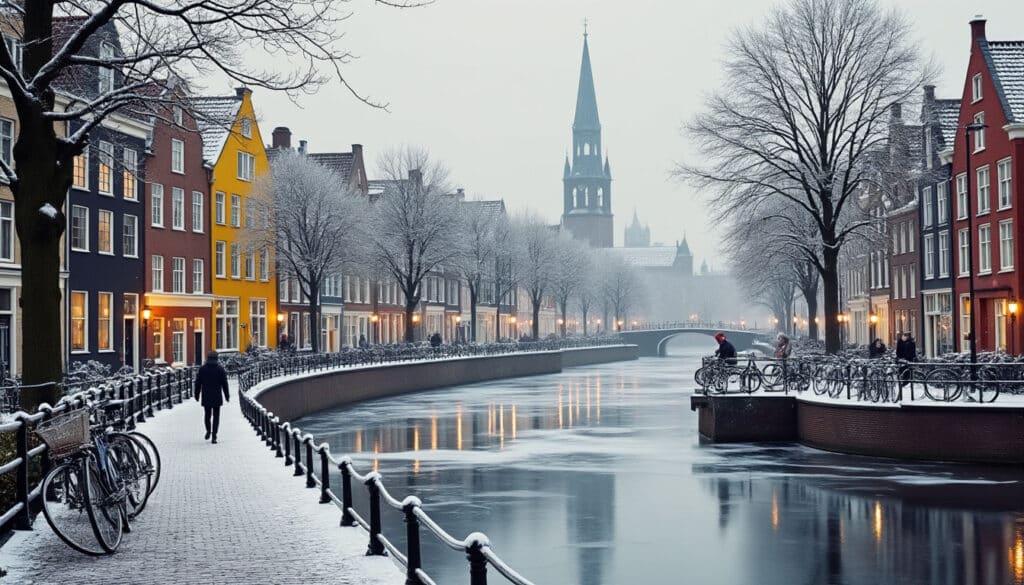
As the autumn leaves begin to fall and the canals of Amsterdam reflect the gray winter skies, the city dons its cold weather attire. This guide delves into the intricate details of Amsterdam’s chilly climate—encompassing the insidious winds from the…
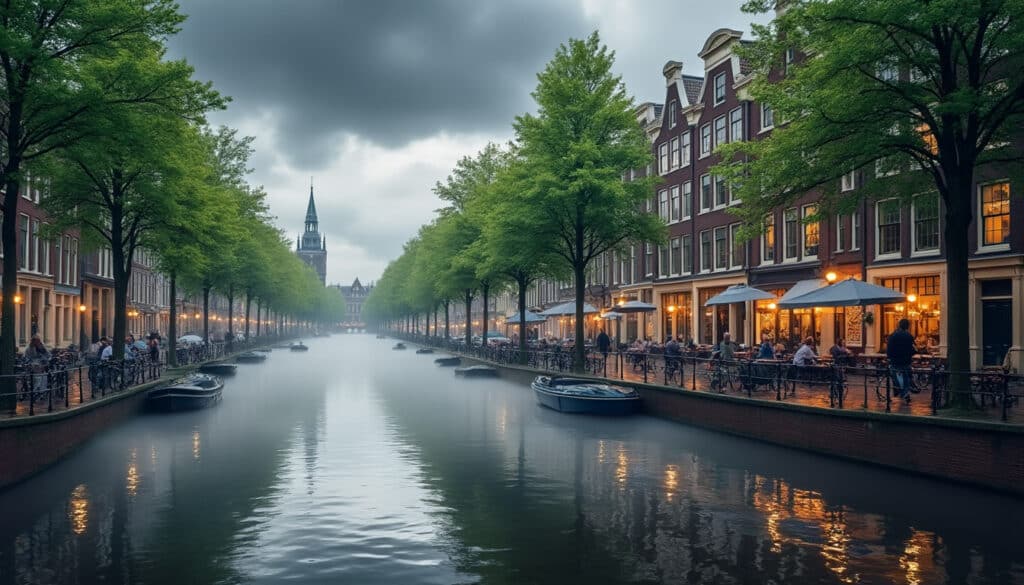
Amsterdam’s climate is as captivating as its canals. This article delves into the humidity aspect that shapes this vibrant city’s weather allure. 📅 Spanning from seasonal shifts to days of rainfall, Amsterdam remains an attractive destination where weather plays a…
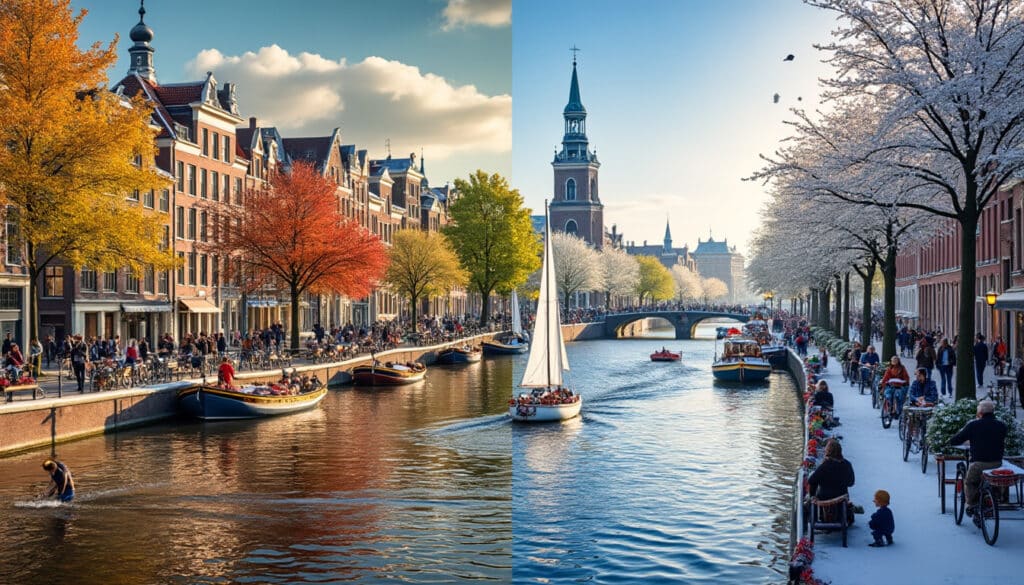
Is Amsterdam warm throughout the year?
Amsterdam is a city of many wonders, capturing the imagination of travelers with its picturesque canals, vibrant culture, and deep historical roots. But those planning a visit might wonder: is Amsterdam warm throughout the year? The Dutch capital, famed for…

Rain and precipitation in Amsterdam
Amsterdam, renowned for its artistic heritage and intricate canals, is a city where the weather often adds an invigorating twist to its charm. With a climate characterized by significant rainfall distributed across the year, locals and visitors alike frequently find…

With its picturesque canals, vibrant culture, and historical charm, Amsterdam offers a unique experience in every season. From the blooming tulips of spring to the magical winter festivals, the city’s climate and cultural events transform its character throughout the year.…

Amsterdam, the capital of the Netherlands, is renowned for its picturesque canals, historical landmarks, and rich cultural tapestry. Among its many wonders, the city offers an exceptional spectacle each day: the dance of the sun as it rises and sets…
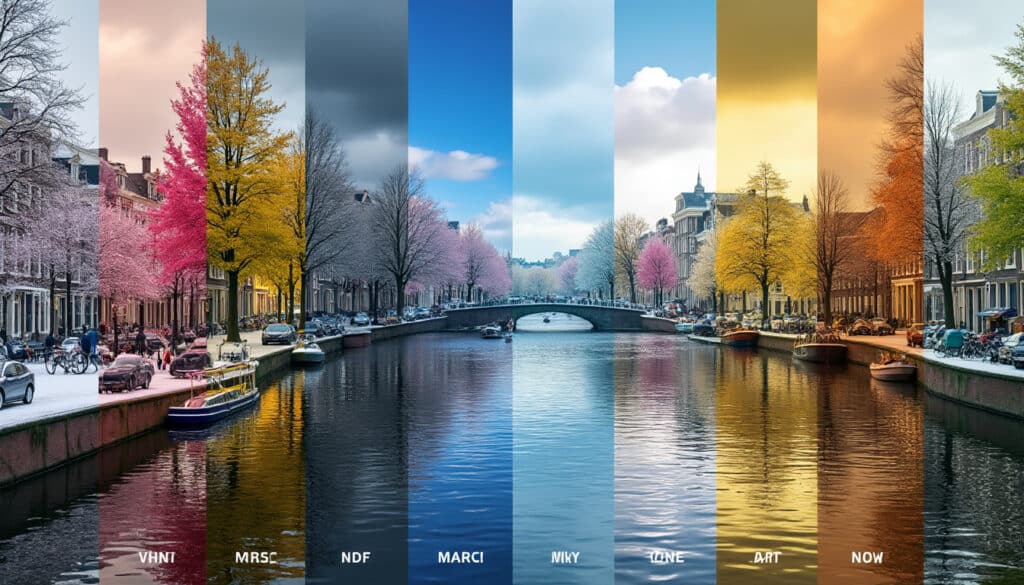
Amsterdam, known for its iconic canals, historic architecture, and vibrant cultural scene, experiences a temperate maritime climate that keeps its weather relatively moderate throughout the year. However, each month brings its own unique climate characteristics, impacting everything from the lushness…
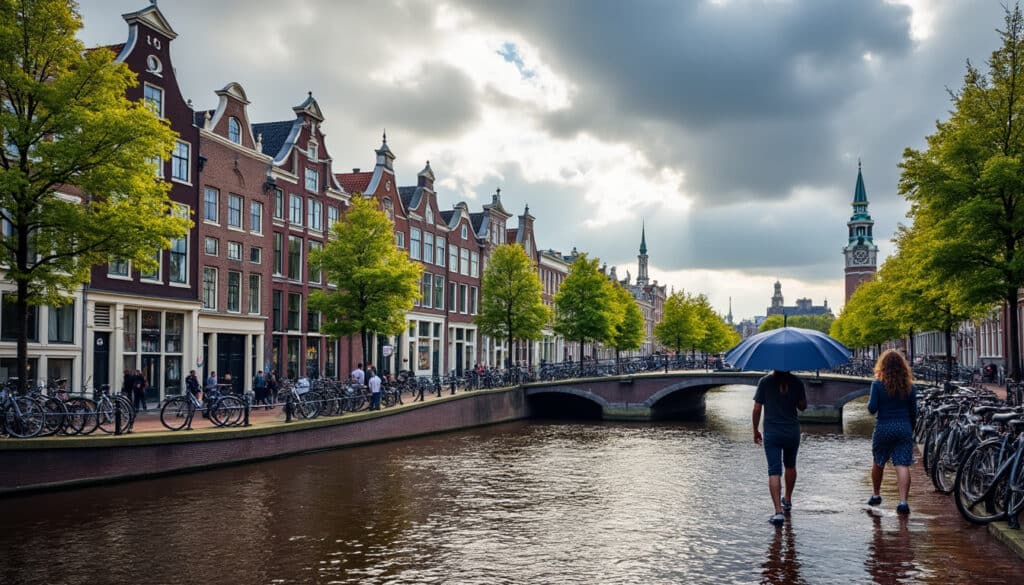
What is the weather like in Amsterdam?
Amsterdam, with its charming canals and picturesque streets, is known for its vibrant culture and historical sights. However, when planning to explore this bustling city, knowing its weather patterns can be pivotal for both residents and visitors. Understanding Amsterdam’s weather…
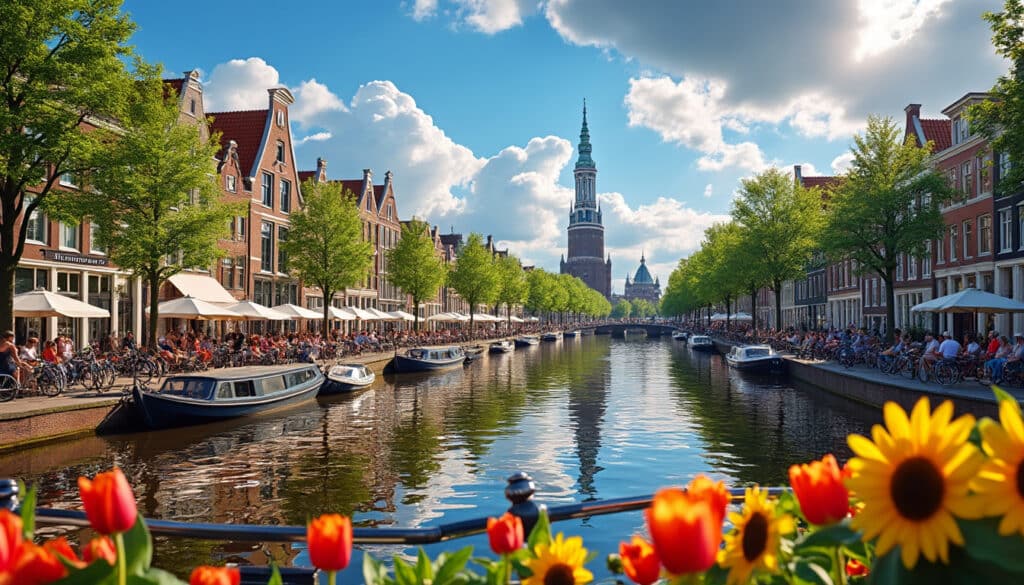
When the sun warms the cobblestone streets of Amsterdam, a unique energy fills the air. The canals glisten under the bright blue skies as locals and tourists alike trade in their typical windcheaters for something more suited to the heat.…

